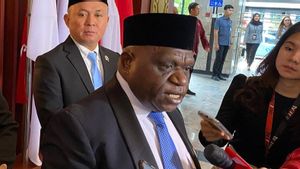JAKARTA - Deputy for Economic Affairs at the Ministry of National Development Planning (PPN)/Bappenas Amalia Adininggar admitted that she had prepared six strategies to transform the Indonesian economy.
"Later on, this economic transformation will be directed at providing a more resilient and adaptive economic foundation," Amalia said as quoted by Antara, Wednesday, July 6.
The six strategies are increasing the competitiveness of Human Resources (HR), increasing the productivity of each economic sector, implementing a green economy, digital transformation, integrating the domestic economy, and moving the country's capital city (IKN).
Regarding improving the competitiveness of human resources, Amalia said, it would strengthen the health system, education, social protection, as well as research and innovation.
The six strategies that are used as references to build a more inclusive and sustainable national economy are expected to increase productivity in order to achieve Indonesia's 2045 vision.
The strategy, which has also been stated in the Government Work Plan (RKP) 2023, is expected to reduce the risk of stagflation for Indonesia due to various current global uncertainties.
Amalia said that the risk of stagflation in developed countries is mostly triggered by the output gap, but in developing countries, the risk of stagflation is influenced by low productivity.
"Therefore, how can we avoid or reduce the risk of stagflation on the Indonesian economy, the key is increasing productivity," he said.
According to Oxford Economic research, Indonesia will face a lower risk of stagflation compared to other countries such as the Philippines, Malaysia, Brazil, India, China, South Africa, Poland, and Turkey.
The English, Chinese, Japanese, Arabic, and French versions are automatically generated by the AI. So there may still be inaccuracies in translating, please always see Indonesian as our main language. (system supported by DigitalSiber.id)













